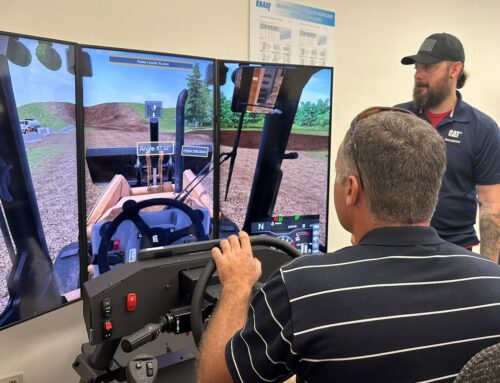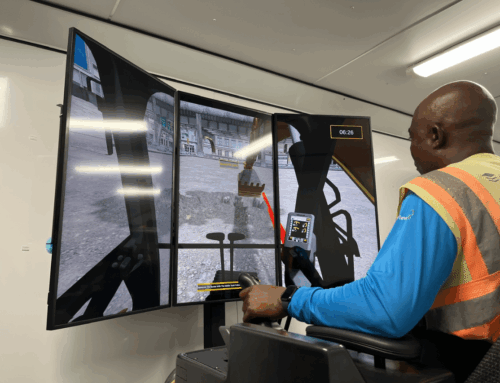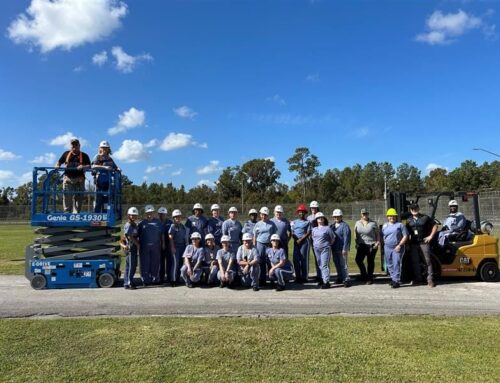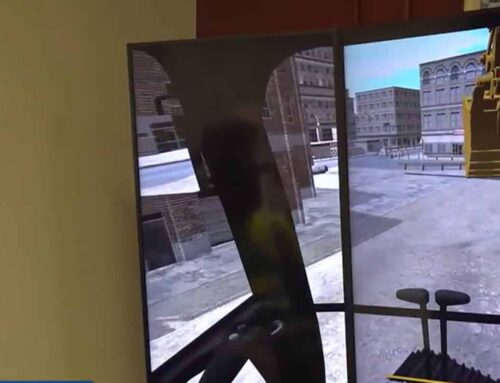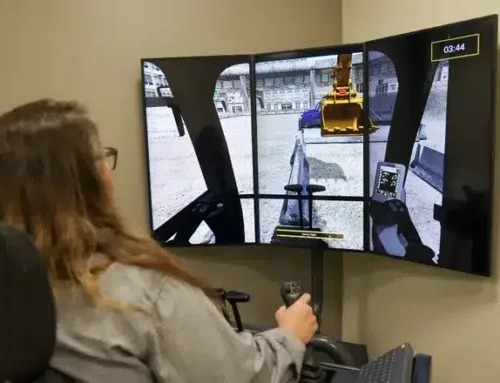“Helping our community’s most vulnerable with solutions that permanently improve lives” is Catholic Charities Community Services’ mission statement. And that’s precisely what Catholic Charities does and more. Through its Center for Educational Opportunity and Career Pathways, the organization provides adult education courses for those individuals wishing to pursue education and employment in the Albuquerque, N.M., area.
31-year-old Avery Cate from Bernalillo, N.M., was one of those individuals. Cate enrolled in the Center’s heavy equipment operator (HEO) program to learn how to operate excavators.
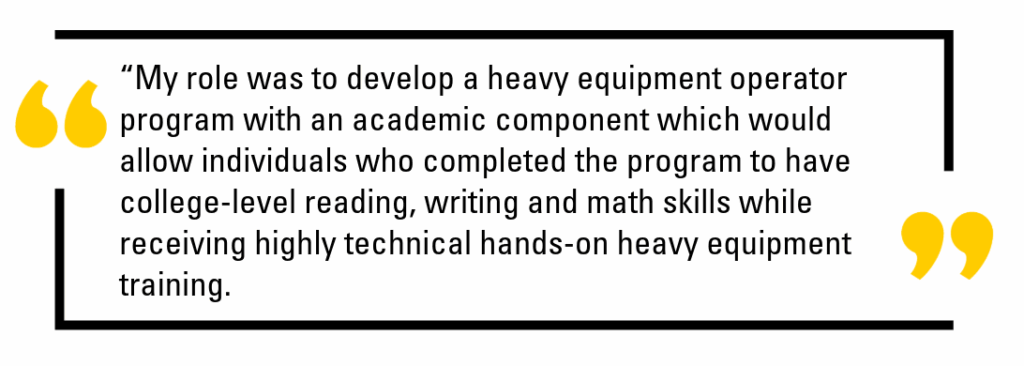
“I was surprised that I caught on pretty fast and how comfortable I felt on the Cat® Simulator,” said Cate, who appreciated how easily he transitioned to the actual machine, which he attributed to the simulator’s authentic Cat controls. “The simulator gave me a lot of knowledge. So, when I was actually on the real machine, it was easier than I thought it would be.”
Cate’s experience is precisely what Catholic Charities’ Program Coordinator for the Center for Educational Opportunity, Taylor Stanton had in mind when he developed the Center’s HEO program.
“We’re one of the few chapters in the country focused on adult education and career pathway services. We offer mostly high school equivalency, citizenship and ESL support services,” said Stanton. “There’s been an initiative at the state level to develop integrated education and training programs to skill up students to create a robust workforce to support local labor demands.”
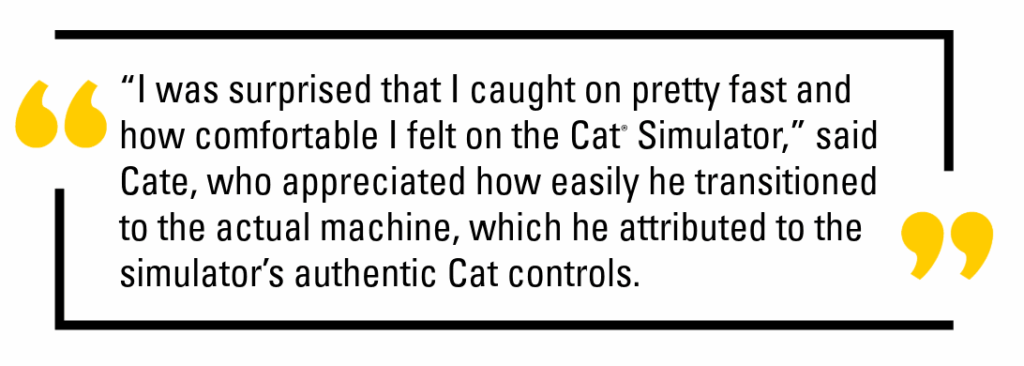
Stanton explained that in response to the state’s initiative and the need for skilled labor locally, Catholic Charities purchased a Cat Simulators system for their future HEO program.
“My role was to develop a heavy equipment operator program with an academic component which would allow individuals who completed the program to have college-level reading, writing and math skills while receiving highly technical hands-on heavy equipment training. We designed it not only to satisfy state requirements but also to allow students to seek post-secondary education programs that can further support their career exploration and pathways.”
Fast-Track Program
The program is considered a fast-track program. Every week for 16 weeks, students complete 16 hours of training, which includes a mix of hands-on simulator training for six hours, classroom coursework and virtual group check-in meetings to review the module completed that week. The Center’s simulators systems include authentic, convertible Cat controls that convert into three machine models: the Excavator, Dozer and Wheel Loader.
Stanton explained that National Center for Construction Education and Research (NCCER)-accredited trainer and journeyman Joseph Montoya and his training company, Safety Zone Credentialing, have proven to be an integral part of the program’s success. With more than 38 years of construction experience and 15 years of teaching, Montoya is not new to the construction industry or teaching students the skilled trades. He was, however, new to using Cat Simulators to train students on how to operate heavy equipment. But now Montoya would not teach students any other way.
“With the simulator, I can do a pretest when students come into the program to see where their knowledge is and where they are at,” said Montoya, who appreciates the reports Cat Simulators’ SimU Campus™ generates. He explained that before students take each module’s performance task tests, they practice in the simulator system’s practice area. Then, after passing the practice tests, he gives the students the exam for each module. Montoya noted, however, that for students to receive NCCER certification, they must complete their final performance verification assessments on an actual machine.
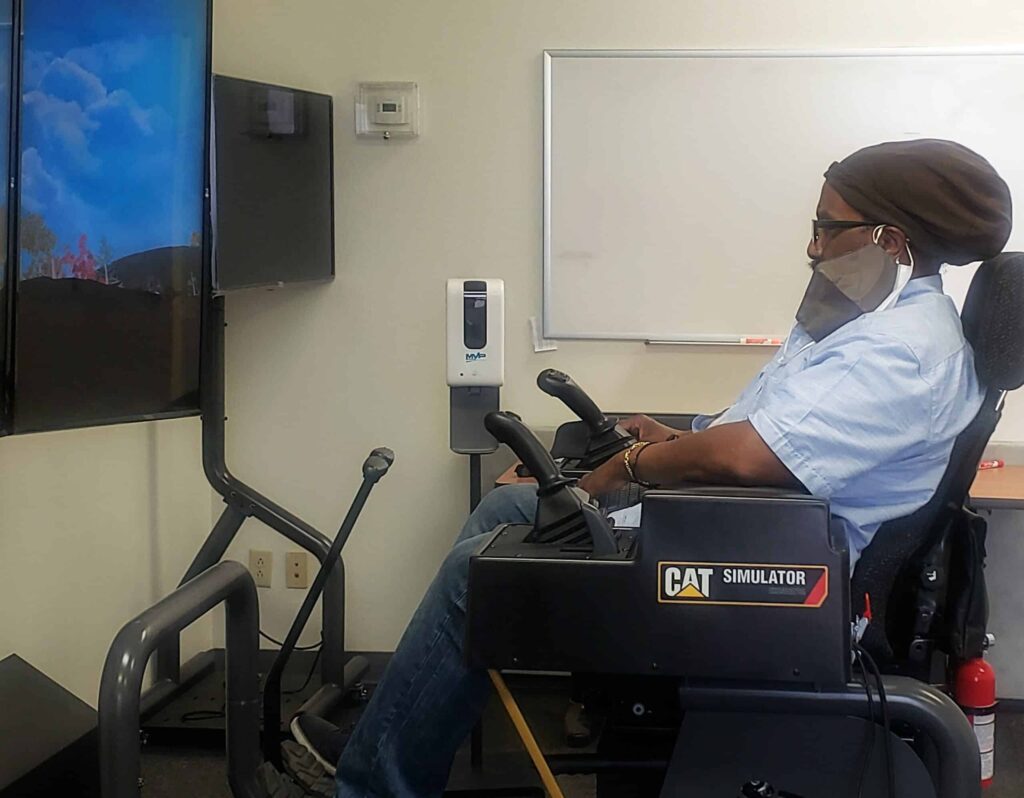
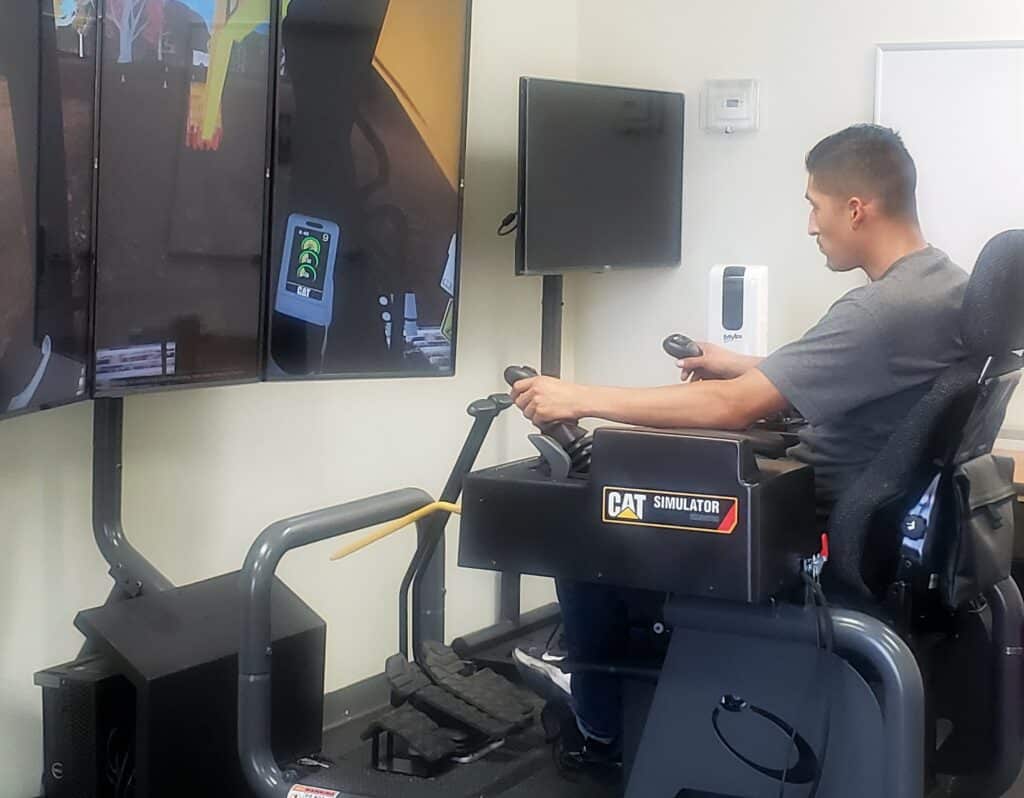
Cost Savings to the Program
Among the many benefits of using Cat Simulators are the cost savings the program has realized. “The simulator saves us a lot of money since we don’t have to rent machines until the final assessments.” Montoya added, “I would not be able to run the program this way if it were not for the simulator.”
Montoya explained that once the students pass the exams and complete their seat time in the simulator, they are ready to operate and be assessed on a real machine. “Students need to spend 40 hours on real equipment which we rent. Then, we bring in an NCCER-certified instructor who goes through what will be required of them on the performance verifications.”
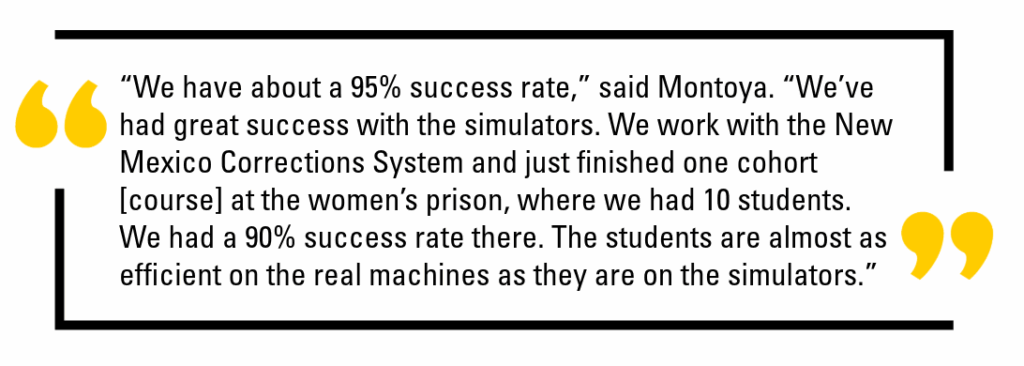
After 40 hours on the actual machine, students must complete their performance tests and written assessments to receive their NCCER certification. “We have about a 95% success rate,” said Montoya. “We’ve had great success with the simulators. We work with the New Mexico Corrections System and just finished one cohort [course] at the women’s prison, where we had 10 students. We had a 90% success rate there. The students are almost as efficient on the real machines as they are on the simulators.”
Valuable Partnerships
In keeping with its mission statement, Catholic Charities has partnered with local community organizations, including Crossroads for Women, an organization that supports women reentering society and women in recovery, and Fathers Building Futures which helps men as they return to society. “What we found to be our best asset are the partnerships we have with local community organizations and partners who offer wraparound services to students,” explained Stanton.
“Both of these organizations, as well as other partners, have been able to offer other social services that students might need and case management services.” Stanton noted, “It’s been a great way of keeping students engaged. If a student needs to leave the program, we can continue to tend to their learning and education and possibly bring them back into the program in the next round as long as they keep in contact with their case manager and us.”
Students who complete the HEO program and receive their NCCER certification can then enroll in post-secondary programs such as construction site safety or management. “We want to give students lucrative training that can satisfy their economic and career advancement needs,” said Stanton. “We also want to encourage a culture of thinking beyond just this step of being a machine operator.”
He concluded, “We try to give students many possibilities and encourage them to think of their future in different ways. We especially encourage a future of lifelong learning. That’s always our big priority, and the agency’s mantra – learning is lifelong. It’s never too late to pursue education.”


